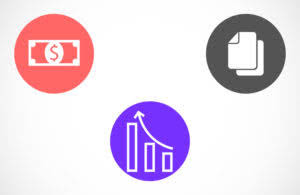Bookkeeping
Break-Even Analysis Definition, Formula, Examples

Understanding the breakeven point goes beyond mere accounting—it becomes a strategic tool in the entrepreneur’s kit. Knowing your breakeven point empowers you to make calculated decisions about expanding your business, adjusting your pricing, or exploring new markets. In the thrilling world of options trading, grasping the concept of break-even points can be your golden ticket to better strategizing your moves.

Components of Break-even Analysis
Comprehending how break-even analysis works is essential for any business owner looking to maintain financial stability. This analysis identifies the point where total revenue equals total costs, meaning you break even with no profit or loss. Now, as noted just above, to calculate the BEP in dollars, divide total fixed costs by the contribution margin ratio. A break-even graph plots costs and revenues against output, showing what total revenue, fixed costs and total costs are expected to be at each level of output. Put simply, the BEP is calculated by dividing the total fixed cost by the difference in price and cost per unit of the product or service. However, it also allows the company to have more flexibility in terms of pricing and sales volume, since it can set different prices for different products, regions, or markets.

What is Outbound Sales? (Explained With Examples)
- In this blog, you will get a detailed overview of what break-even analysis is, why it’s important, its key components, and the formula used for calculation.
- A decrease in the breakeven point can have several positive implications for the business, including increased profitability and financial stability.
- This can be achieved by improving the quality of products or services, offering premium versions of products or services, or marketing to higher-income customers.
- Once your business hits its break-even point, you’ll understand what your prices should be to ensure you’re generating enough revenue to cover costs and start making a profit.
- This continuous monitoring helps identify trends, such as declining sales or increasing costs, enabling timely interventions to address issues before they escalate.
Variable costs, which are primarily clay and labor (if they have employees), average $6 HOA Accounting per bowl. When you decrease your variable costs per unit, it takes fewer units to break even. In this case, you would need to sell 150 units (instead of 240 units) to break even.
- Companies can reinvest their profits into expanding their operations, developing new products or services, or improving their existing ones.
- Break-even analysis primarily focuses on quantitative data, such as costs and sales volumes, potentially neglecting qualitative factors influencing business success.
- Variable costs, like materials and shipping costs, can fluctuate based on production levels.
- The following table gives a breakdown of the price, variable costs, and the expected number of units to be sold and let us assume the fixed cost to be $6,600.
- Operations managers can also collaborate with finance teams to identify cost-saving opportunities and enhance operational efficiency.
- Yes, the break-even point can change due to variations in fixed costs, variable costs, or selling prices.
What is Business Development? (Explained With Examples)
Break-even analysis allows businesses to conduct scenario analyses, evaluating the potential impact of various changes on profitability. For instance, businesses can simulate the effects of increased marketing expenses, changes in production methods, or fluctuations in sales volume. This capability helps organisations prepare for uncertainties and develop adaptive strategies that respond to evolving market conditions. By considering multiple scenarios through break-even analysis, businesses can enhance their resilience and agility in facing challenges. Break-even analysis is one of the most fundamental tools for assessing a company’s profitability.
It often overlooks external factors like competitive dynamics and economic conditions that can influence both costs and sales levels. In addition, the calculations heavily rely on accurate data; any discrepancies can yield misleading results. Comprehending this analysis allows you to set realistic sales targets and pricing strategies, ensuring you cover your costs. Variable costsVariable costs are costs that will increase or decrease in direct relation to the production volume. These costs include cost of raw material, packaging cost, fuel and other costs that are directly related to the production. Establishing a BEP can help business leaders set a price for a product or service that is both competitive and necessary to remain in operation.

Calculation of Break-Even Analysis
- For instance, if a sales team knows the BEP for a product, they can better strategise promotional campaigns, set sales targets, and understand how their efforts contribute to overall profitability.
- A business’s break-even point is the moment when the total revenue matches total costs, meaning there’s no profit or loss.
- Semi-variable costs can be challenging to analyze because they do not behave in the same way as fixed or variable costs.
- By measuring performance through break-even analysis, organisations can foster a culture of accountability and continuous improvement.
- The potter can estimate how many additional bowls their broader reach will allow them to sell each month and weigh that against the increased fixed costs that come with paying for additional marketing.
- To understand the impact on overall profitability and the amount needed to achieve desired net profits after taxes, a separate analysis incorporating tax rates is necessary.
Fixed costs like rent, utilities and employee salaries can increase over time and variable costs may increase due to economic break even definition factors like inflation or disruptions in the supply chain. In the second approach of break even analysis method, we have to divide the fixed cost by contribution to sales ratio or profit-volume ratio i.e. Finally, multiply break-even units by the selling price to determine the revenue required for profitability. To conduct a break-even analysis, start by identifying your fixed and variable costs.

![]()
Now we can take this concept a step further and compute the total number of units that need to be sold in order to achieve a certain level profitability with out break-even calculator. Meanwhile, stock market enthusiasts across America, including those trading on the bustling floors of the Chicago payroll Stock Exchange, utilize break-even points to help temper their investment strategies. If you buy shares at a certain price, your break-even point is when the stock’s market price climbs back up to your purchase price after any dips. No profit, but crucially, no loss—the very embodiment of the breakeven concept.
